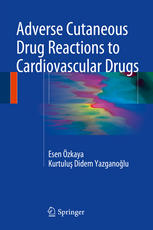

Most ebook files are in PDF format, so you can easily read them using various software such as Foxit Reader or directly on the Google Chrome browser.
Some ebook files are released by publishers in other formats such as .awz, .mobi, .epub, .fb2, etc. You may need to install specific software to read these formats on mobile/PC, such as Calibre.
Please read the tutorial at this link: https://ebookbell.com/faq
We offer FREE conversion to the popular formats you request; however, this may take some time. Therefore, right after payment, please email us, and we will try to provide the service as quickly as possible.
For some exceptional file formats or broken links (if any), please refrain from opening any disputes. Instead, email us first, and we will try to assist within a maximum of 6 hours.
EbookBell Team

4.4
92 reviewsAdverse cutaneous drug reactions (ACDR) are among the most frequent events in patients receiving drug therapy. Cardiovascular (CV) drugs are an important group of drugs with potential risk of developing ACDR especially in elderly as marketing of more new drugs and their prescription continue to increase. However, like with most other drugs the exact incidence of cutaneous side effects from CV drugs is difficult to estimate due to sporadic reporting. Moreover, a reliable designation of a certain drug as the cause of a certain type of reaction can rarely be made. Apart from the well-known angioedema/urticaria from ACE inhibitors, lichen planus / lichenoid reaction from beta adrenergic blockers and photosensitivity from thiazid diuretics, ACDR from CV drugs might be seen in a wide spectrum extending to rare but life-threatening conditions such as erythroderma, Stevens-Johnson syndrome, toxic epidermal necrolysis or drug hypersensitivity syndrome. In this comprehensive review, the reported types of ACDR to CV drugs will be discussed according to drug class and the type of dermatologic reaction with special emphasize on cross-reactions and the role of patch testing in diagnosis.